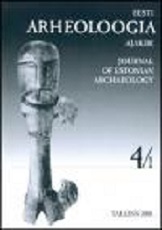THE INFLUENCE OF SOCIAL STATUS AND ETHNICITY ON DIET IN MEDIAEVAL TALLINN AS SEEN THROUGH STABLE ISOTOPE ANALYSIS
THE INFLUENCE OF SOCIAL STATUS AND ETHNICITY ON DIET IN MEDIAEVAL TALLINN AS SEEN THROUGH STABLE ISOTOPE ANALYSIS
Author(s): Emma Lightfoot, Magdalena Naum, Villu Kadakas, Erki RussowSubject(s): Archaeology, Middle Ages
Published by: Teaduste Akadeemia Kirjastus
Keywords: INFLUENCE OF SOCIAL STATUS ; ETHNICITY ON DIET ; MEDIAEVAL TALLINN ; STABLE ISOTOPE ANALYSIS
Summary/Abstract: Food encodes social and cultural values and has an important role to play in defining identities. In mixed populations, diet can be used to distinguish between ‘us’ and ‘them’. This study investigates the extent to which the inhabitants of mediaeval Tallinn, an important trading centre, used food to maintain distinct identities. Human skeletal material was selected from four mediaeval cemeteries in Tallinn, chosen to represent different groups within Tallinn’s society, likely including foreign merchants, foreign monks, urban Estonians and low-status Estonians, and from a nearby rural site, Kaberla, for comparative purposes. The individuals were investigated using carbon, nitrogen and oxygen stable isotope analysis. The results indicate that while all analysed individuals consumed diets based on C3 plants and animals consuming C3 plants, some individuals also consumed small amounts of C4 plants (likely millet) or seafood. C4 plants were consumed by the urban residents buried at the Church of the Holy Spirit and one or two individuals from Sulevimägi. It is thought that millet was an imported food consumed by the middle class. Marine foods were consumed by the individuals at St Catherine’s Church. These individuals were also identified as migrants and were likely either monks or foreign merchants. The results suggest that in some cases the people of Tallinn did use food as a means of maintaining social statuses and potentially ethnicities. Only one individual (LTL06) was identified as having had a significant change in diet during life, with the inclusion of marine foods in adulthood. This may indicate that this individual attained or aspired to higher social status during life and adhered to Christian dietary customs.
Journal: Eesti Arheoloogia Ajakiri
- Issue Year: 20/2016
- Issue No: 1
- Page Range: 081-107
- Page Count: 27
- Language: English

